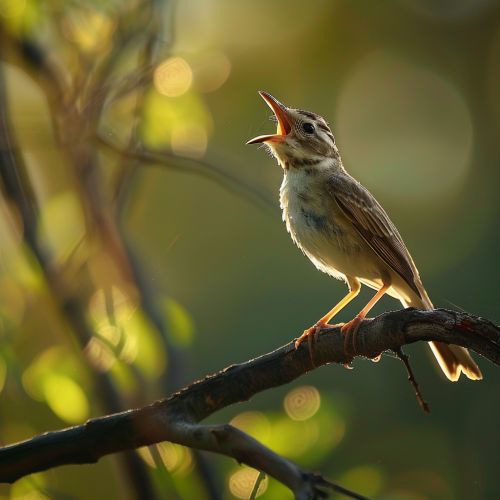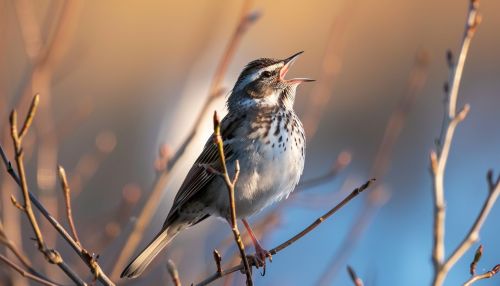Song Learning
Introduction
Song learning is a critical aspect of birdsong development, akin to the way humans learn to speak. This process involves the acquisition, memorization, and production of specific song patterns, which are essential for communication and mating in many bird species. Song learning is a complex process that involves a combination of genetic predisposition and environmental influence.


Genetic Basis of Song Learning
Research has shown that song learning has a strong genetic basis. Certain genes, such as the FOXP2 gene, have been identified as critical for song learning in birds. This gene is also implicated in speech and language development in humans, suggesting a shared evolutionary pathway for vocal learning.
Environmental Influence
While genetics provide the framework for song learning, environmental factors play a significant role in shaping the songs that birds learn. Young birds typically learn their songs from adult "tutors," usually their fathers or other males in their social group. This process is known as imitative learning. The quality of the tutor's song and the amount of exposure to the song can significantly impact the song learning process.
Neurobiology of Song Learning
Song learning is a neurologically complex process that involves several distinct regions of the bird's brain. These regions, collectively known as the song system, are responsible for the production and learning of songs. The song system is divided into two main pathways: the motor pathway, which controls the production of song, and the anterior forebrain pathway, which is involved in song learning and variation.
Stages of Song Learning
Song learning in birds typically occurs in two main stages: the sensory phase and the sensorimotor phase.
During the sensory phase, young birds listen to and memorize the songs of adult tutors. This phase usually occurs early in life and is critical for the formation of a song template, which is a neural representation of the tutor's song.
The sensorimotor phase follows the sensory phase and involves the practice and refinement of the memorized song. During this phase, the young bird begins to produce its own song, which initially is a rough approximation of the tutor's song. Through a process of trial and error, the bird gradually refines its song until it matches the memorized template.
Song Learning in Different Species
While song learning is most extensively studied in songbirds, other groups of birds, such as parrots and hummingbirds, also exhibit this behavior. These groups, along with songbirds, are known as vocal learners, as they have the ability to learn new sounds based on experience. In contrast, non-vocal learners, such as chickens and pigeons, can only produce sounds that are genetically predetermined.
Impact of Song Learning
Song learning has significant implications for birds. In many species, the complexity and quality of a male's song play a crucial role in attracting females. Additionally, song can serve as a means of communication, allowing birds to convey information about their identity and territorial boundaries.
